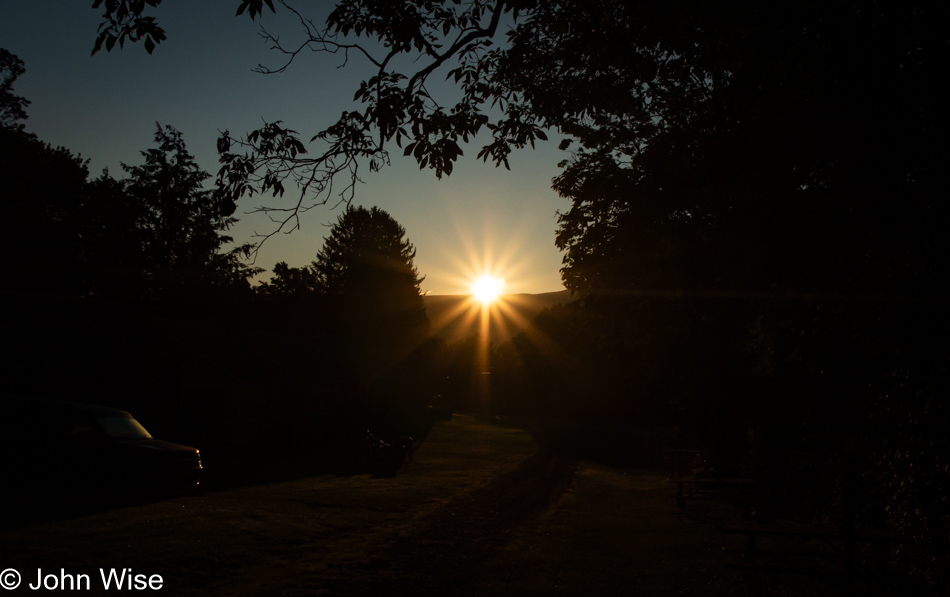
I can’t say I’m very happy with yesterday’s perfunctory blog post. Sure, it covered that we went from A to B, ending up in C, but I think this is where, after 12 days on the road, my writing is growing sloppy. Things like the abundance of love traveling with us, the hand holding, snuggling, and non-stop smiles are not being written about. The constant state of wow and awareness of our crazy privilege is never far from mind. Our days are jam-packed from 5:30 in the morning when we wake up to 10:30 at night when we finally get to sleep, but this is how we want to spend our time, knowing that we are taking advantage of that precious commodity we’ve been allocated. Even as I write this because it’s nagging me how sloppy I feel yesterday’s post was, there’s a mist on the meadow across the street from our lodging, the sun has peeked over the horizon, and we should be out already exploring Kennebunkport while it’s still quiet and the mass of tourists we saw there last night haven’t emerged from their cocoons yet. Finding quality headspace time when the senses are working overtime is not always easy, but we know that immersion, demands, and outcomes have always proved worthwhile.
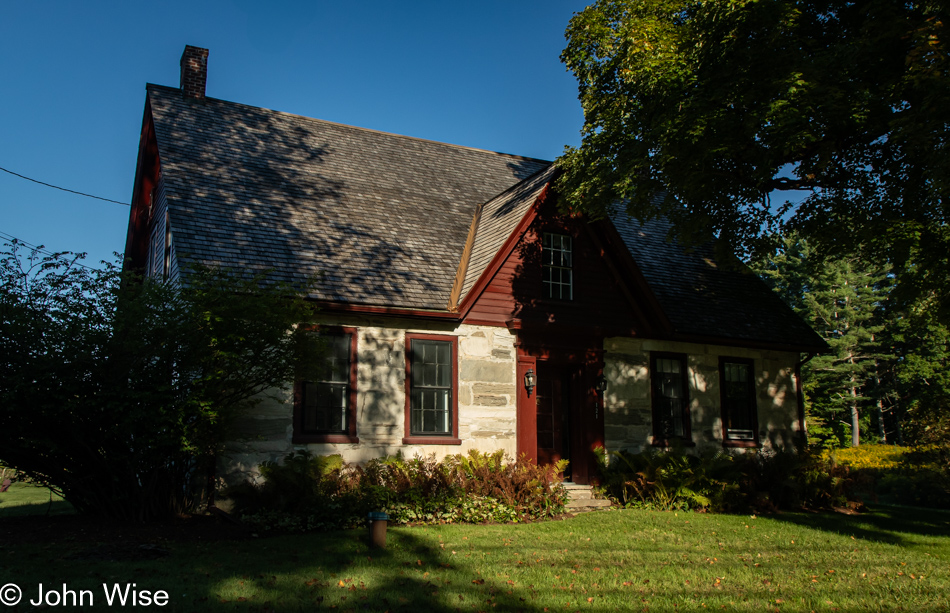
It is too early to visit the Robert Frost Stone House and Museum, not that I’m in any way certain we’d have dipped in if it had been open as experience suggests that we’d be viewing the inside of a house, some interpretive plaques, and a donation box near the door. While he was an important American prize-winning poet, I’ve not paid attention to his work since I was a kid.
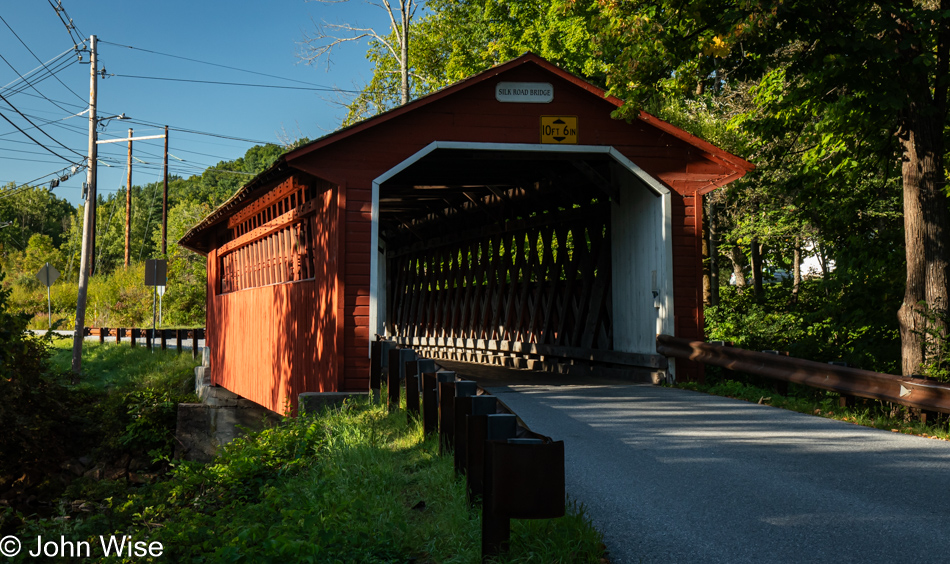
I have to say that I don’t always understand the romanticized perception of covered bridges other than the rarity of their existence and maybe what they harken back to. I suppose in our collective mind’s eye, we see the horse-drawn carriage on an idyllic winter day pulling a bucolic family over the bridge, or maybe it’s spring heading into summer, and we believe we remember the young couple going on a date, the horse galloping along the country road among the farms, but aren’t these likely reflections of our literature and more probably movie manufactured images? Of course, there’s no denying that there’s an architectural element of interest, but I have to wonder out loud how much of this is cultural conditioning. I don’t want to come off as sounding cynical, and I do love seeing the deep red contrasting colors set against the environment. I also could see them having an economic benefit from the tourists seeking them out, but I also have to think about the cost of maintenance at a time when general road conditions are not always ideal. Many, far too many, of the houses we are driving by have fallen into a state akin to hovels and yet are still occupied while Dollar Stores proliferate, serving those in poverty.
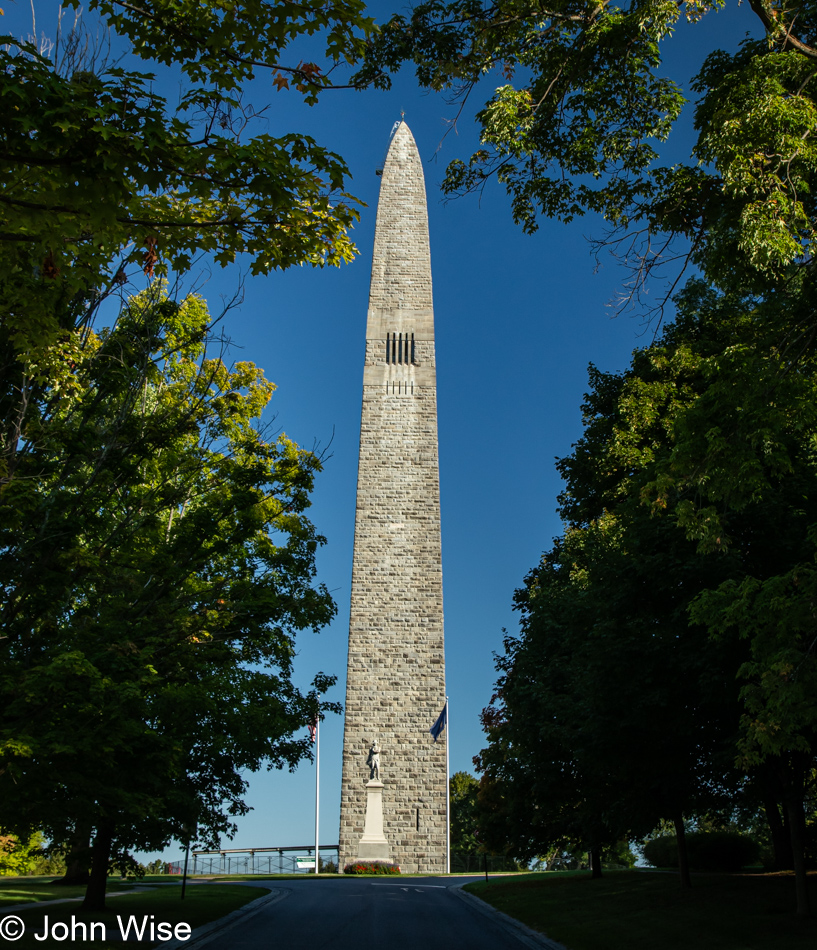
This is the tallest building in Vermont, 306 feet high (93 meters), and it is the Battle Monument in Bennington. It commemorates the Battle of Bennington, fought in 1777 during the Revolutionary War. Had we been here after 10:00, we could have taken an elevator to a viewing point somewhere on high, but not today; we are too early.
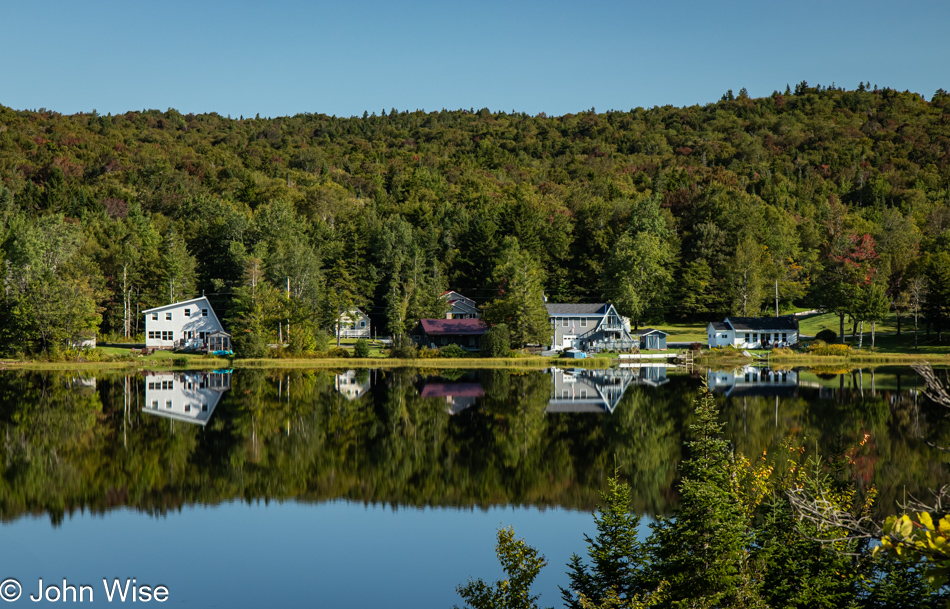
Stopping to capture a deeper look into nature’s beauty is a driving force behind these road trips. Somehow, city and state agencies don’t consider where visitors might want to pull over to take in the sights; then again, they never took into account that bicyclists might want to share the road, and so things are too often designed for the convenience of commerce. In an evolving economy where travel, remote work, and adventures increasingly capture large parts of daily life, I don’t believe the United States is moving in a direction to cater to those needs. As we’ve been traveling over the breadth of this country, we’ve wanted nothing more than to extoll the vibrant beauty and great opportunity to witness America, but that’s not always been made as convenient as we’d wish. We need more pullouts so we’re not pulling over to the side of the road with our hazard lights flashing because we can’t fully leave the asphalt.
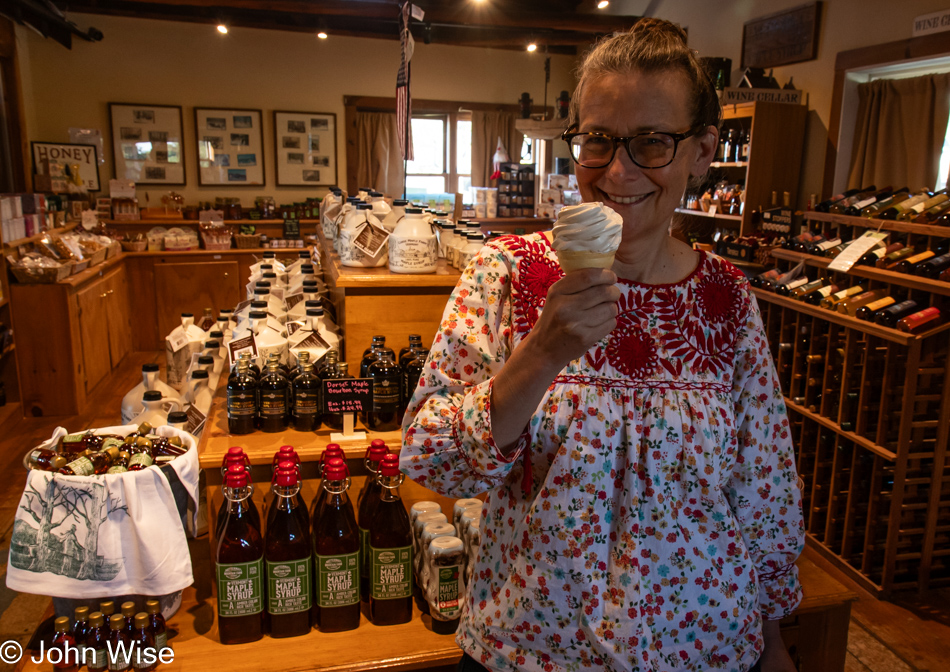
At the Hogback Mountain Country Store in Marlboro, Vermont, Caroline finally found the maple soft-serve her friend Christine had recommended. We were also able to grab a bottle of “very dark” maple syrup at this store on top of Hogback Mountain.
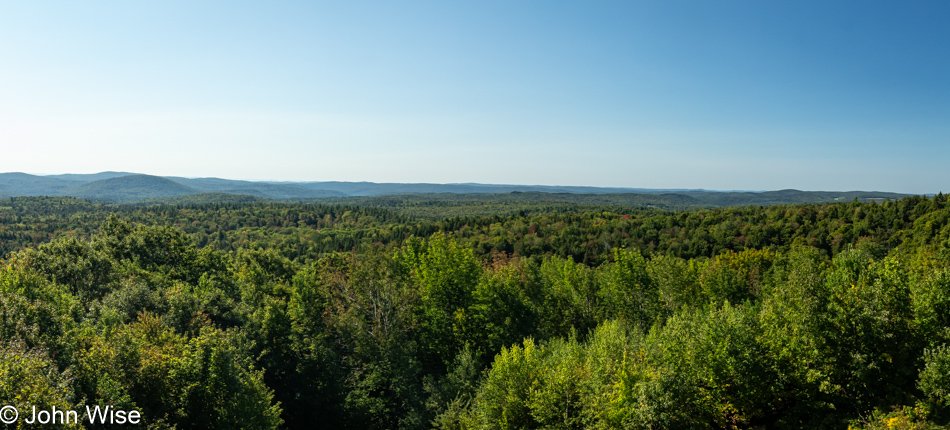
This viewpoint from the shop offers a line of sight looking out over Vermont into New Hampshire and Massachusetts.
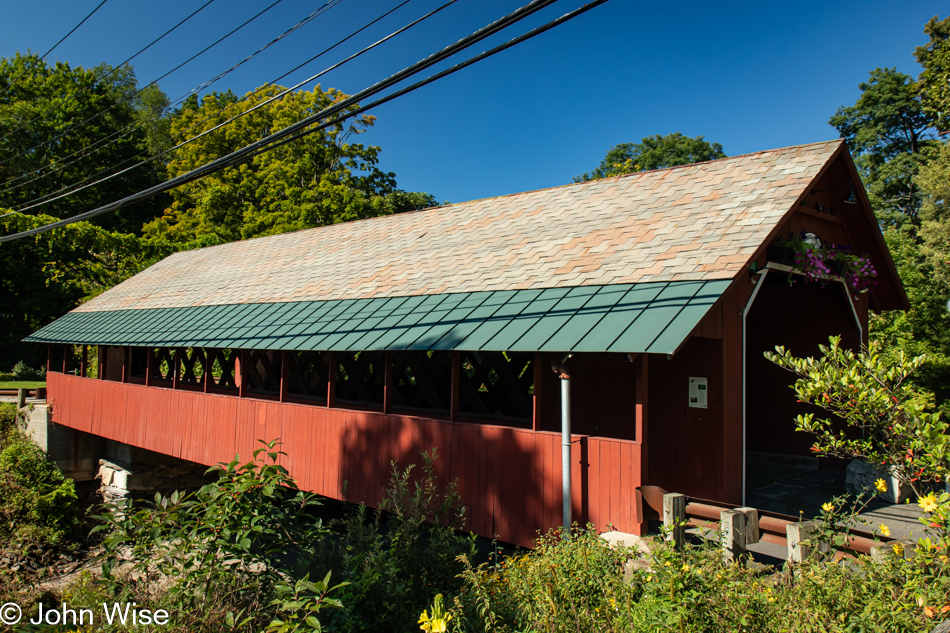
This is the Creamery Covered Bridge in Brattleboro, while the one further above was the Silk Road Covered Bridge in Bennington, both in Vermont.
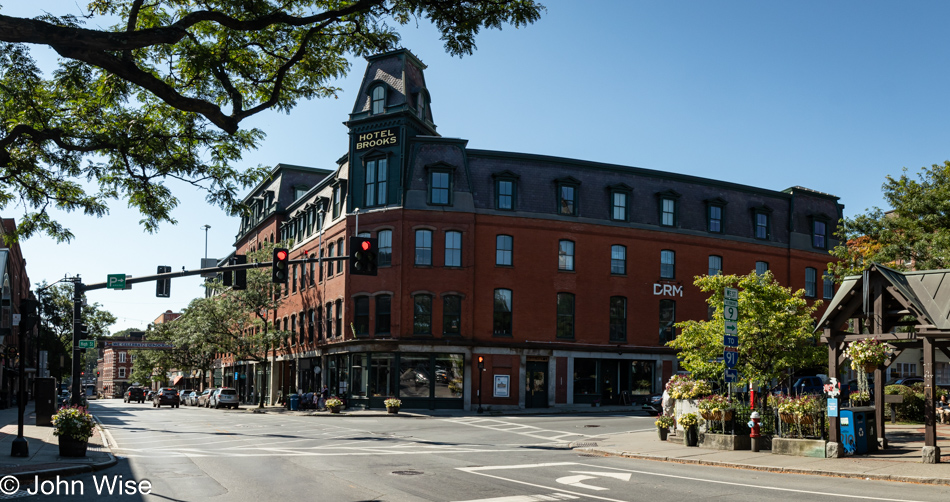
We are well aware that we are giving short shrift to the towns and villages we are passing through, but these places easily become timesinks when trying to find the best angles to capture the essence and charm of the place. Instead of indulging the 20 minutes or more when we should be strolling the streets of these places, such as here in Brattleboro, we typically opt to keep moving while entertaining the idea that maybe someday we’ll return to spend quality time.
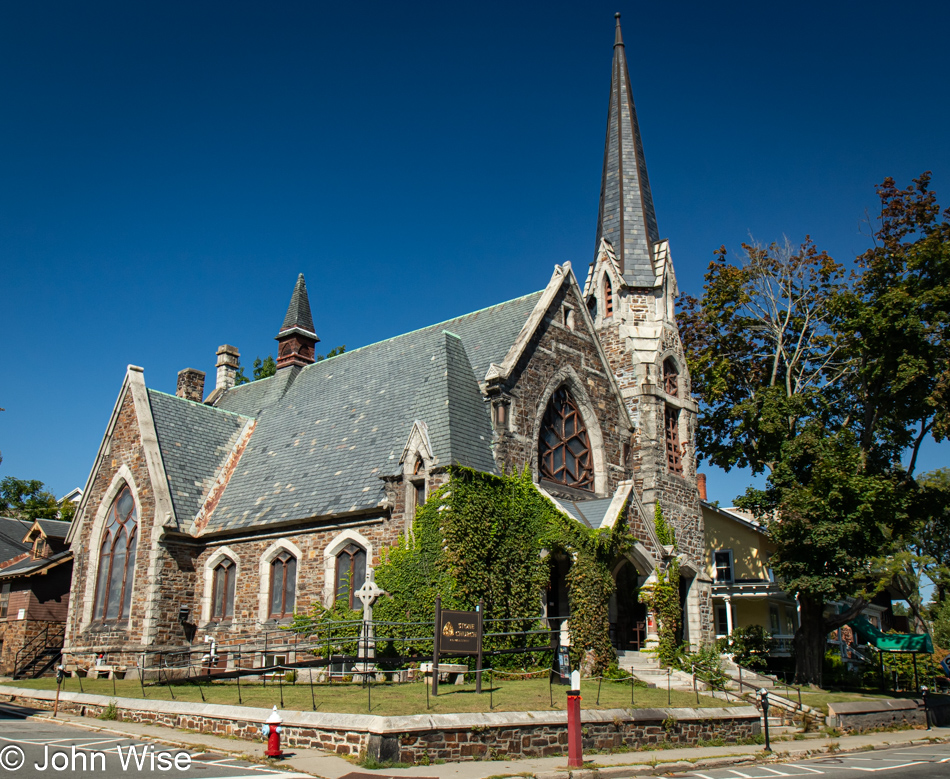
The old Stone Church, also in Brattleboro, no longer functions as a church.
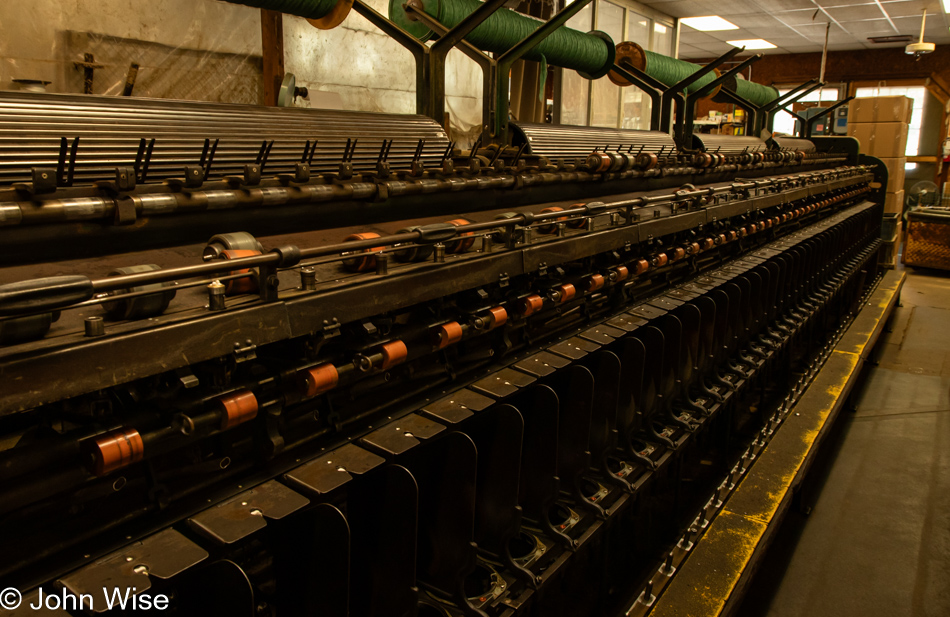
Instead, we traveled on a short detour to Putney, Vermont, where we found the church of Green Mountain Spinnery. I’ll explain: this ancient machine is an old-fashioned wool spinning contraption used as just one part of turning raw wool into yarn. If you are a fiber arts enthusiast, this is a nerd-nirvana kind of place.

Our tour guide to this fiber mill, Sally, on the left, was joined by Marley, on the right, who has been mastering the craft of how all of this works.
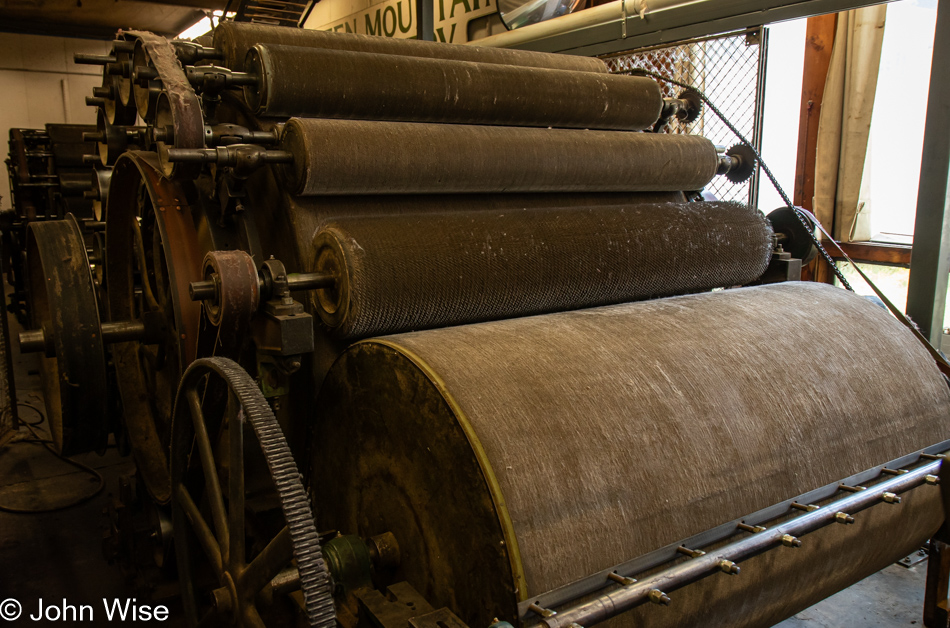
I don’t believe this facility has a modern piece of equipment within its walls. Even the spinner that rings extra water from the freshly washed wool that arrives with oodles of lanolin is from the very early 20th century, somewhere around 1906, if my memory serves me right. Pictured above is one of the carders.
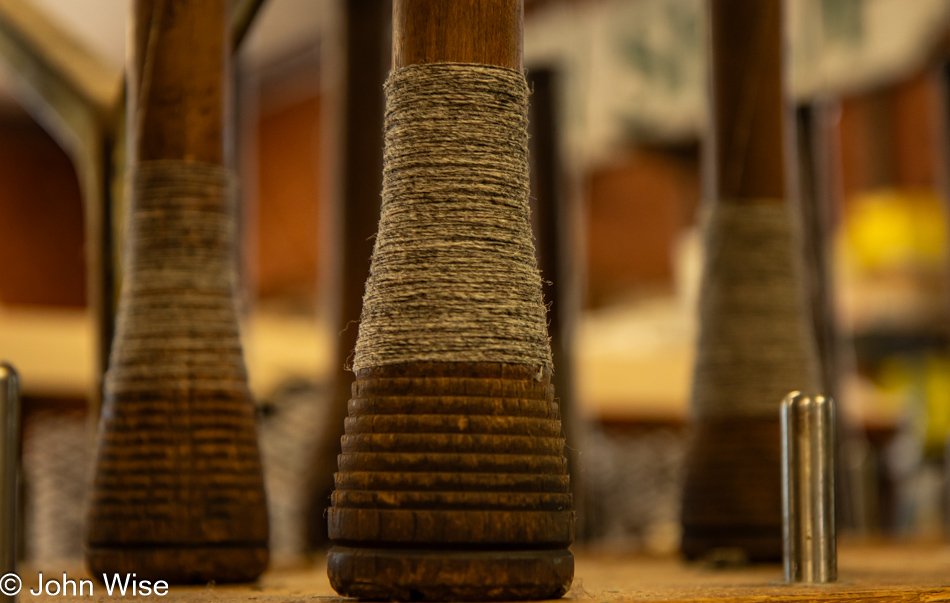
Even nearly empty bobbins have a sense of art to them; I think I could have spent another hour on their factory floor exploring the nooks and crannies.
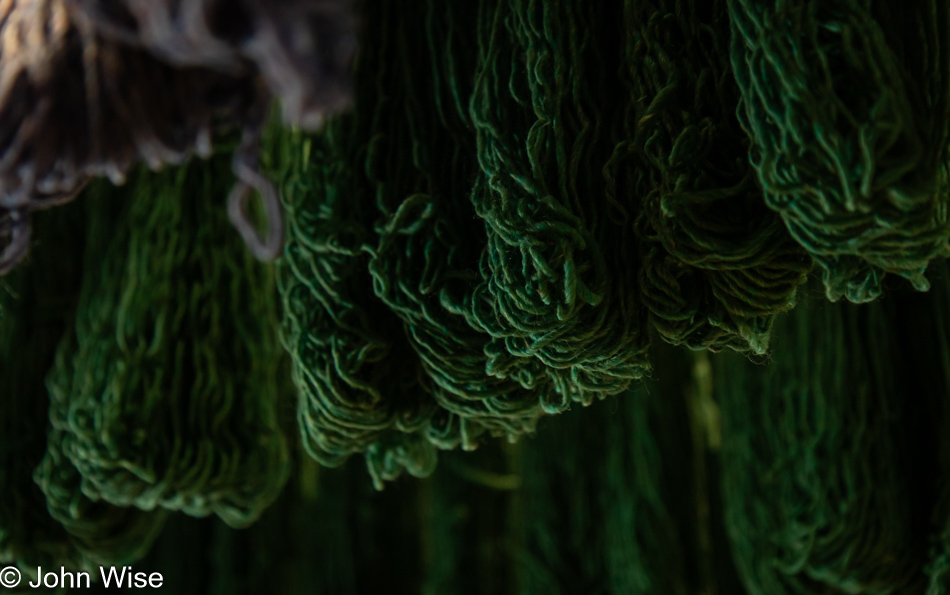
Hanging skeins of yarn ready to go to market or be returned to the person who contracted their services.
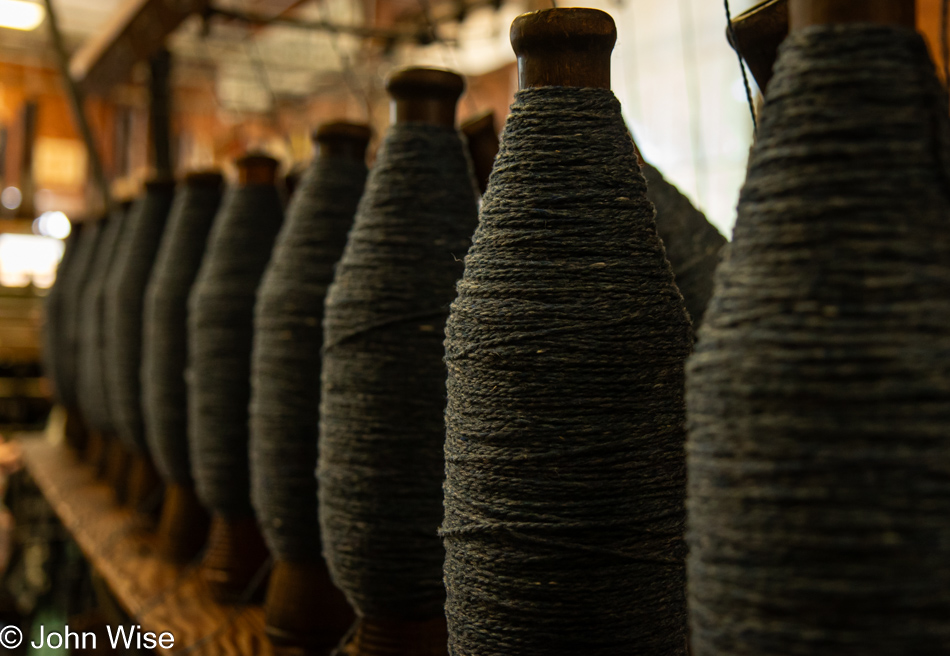
Fully loaded bobbins with plied yarns, ready to be wound on skeins.
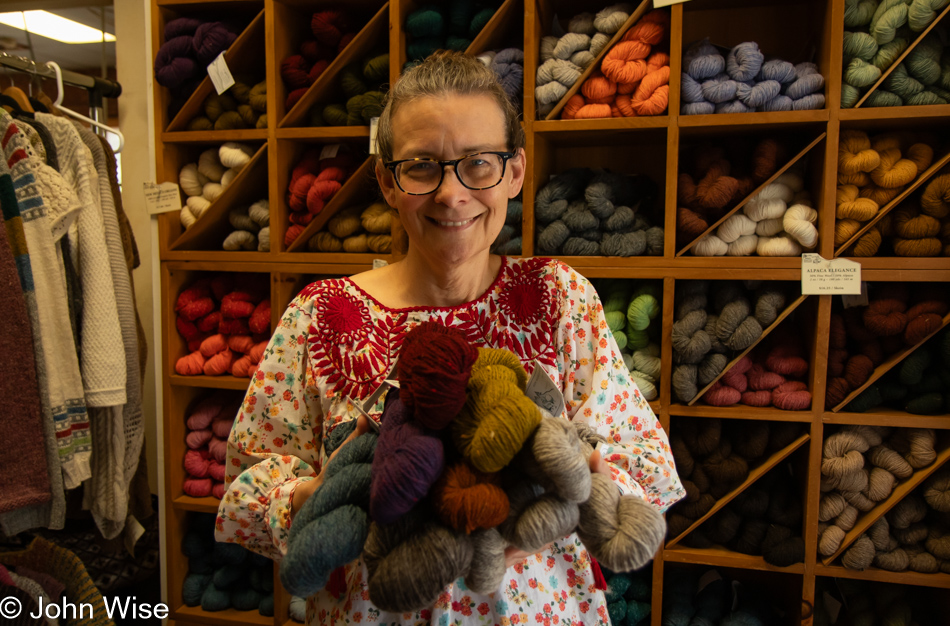
With arms full of ten skeins of yarn, eight for Caroline for a vest she’s considering, and two for me and what will likely become a beanie. The ladies at Green Mountain Spinnery were incredibly gracious and super busy. While in the shop, another six people showed up, all wanting tours. The processes and history being kept alive here are increasingly rare, and we are truly grateful that we were allowed a glimpse into it all.
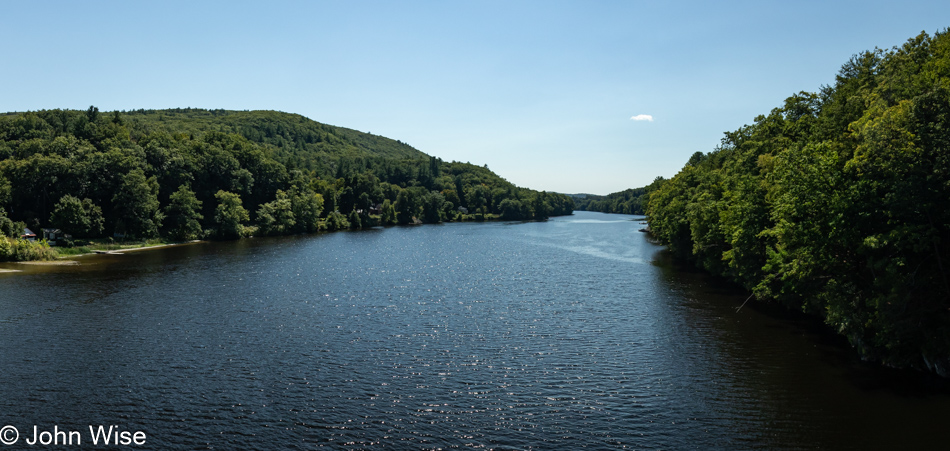
Crossing the Connecticut River, we are about to enter New Hampshire, and I need to find a healthy outlet for the tensions crawling up my butt, along with these drivers in New England who seem to believe that tail-gating is the proper way to encourage me to GTFO of their way. It is said that Zonies (those of us from Arizona) are distant, the Californians are flakes, and New Yorkers are plain rude, but these Vermonters and New Hampshirians are increasingly appearing to be entitled assholes. Our encounters with some, but not all, locals suggest they have social issues beyond the populations of almost every other state we’ve ever visited.
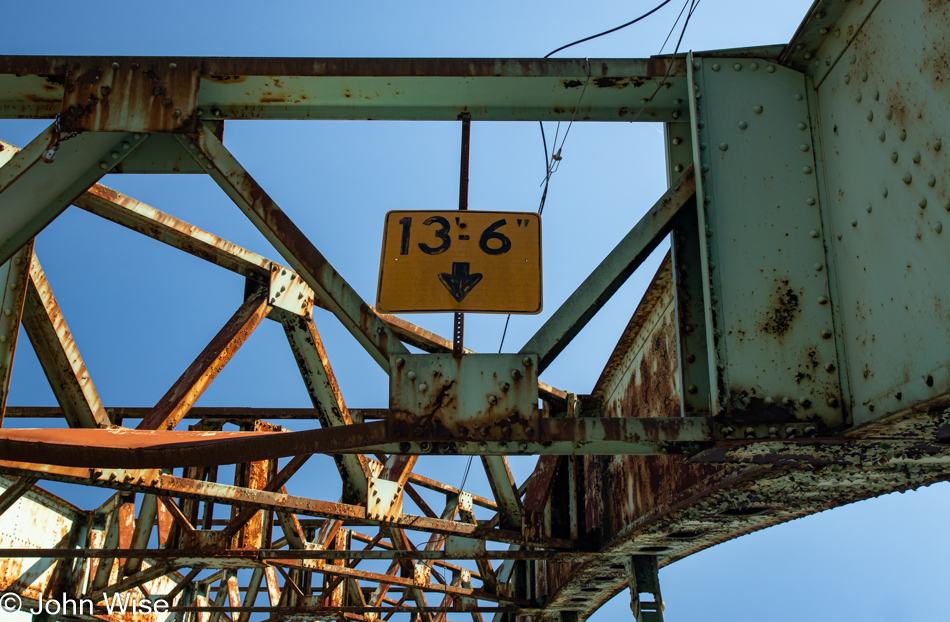
This is not the bridge we crossed into New Hampshire; the new one parallels the old rusty hulk of an artifact we are walking out on.
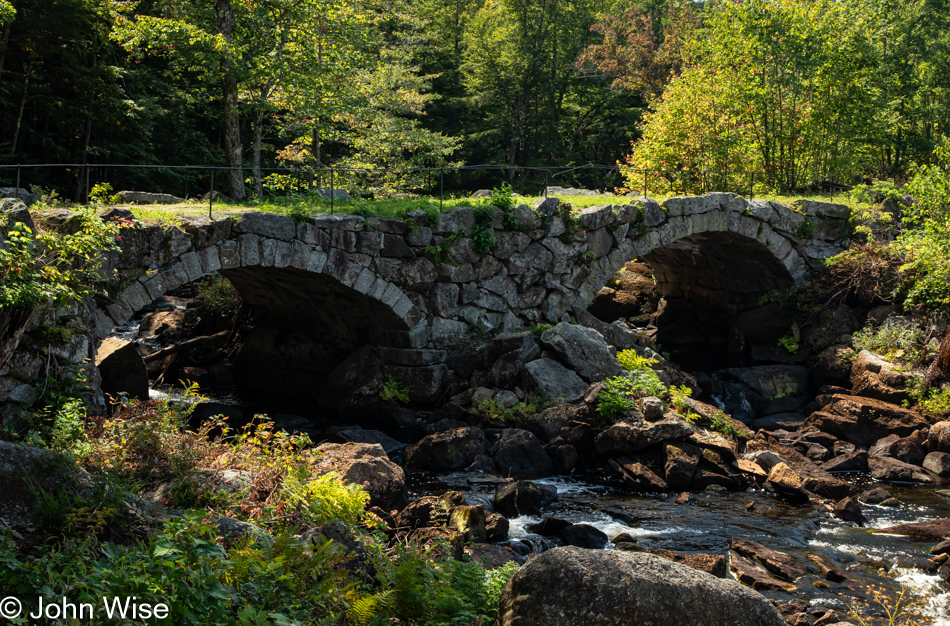
While a footpath now, the Stone Arch Bridge appears to be just one of five here near Stoddard, New Hampshire.

First mushroom in the wild I’ve seen in thousands of miles, growing out of moss, to boot. It’s a scene right out of Oregon.
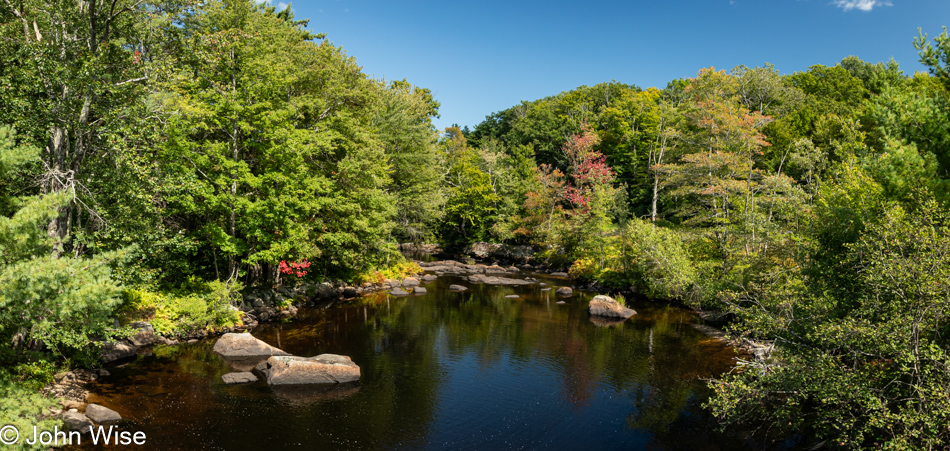
The north branch of the Contoocook River in Antrim, New Hampshire, and, again, if I’m not mistaken, this river is the one that flows under the Stone Arch Bridge.
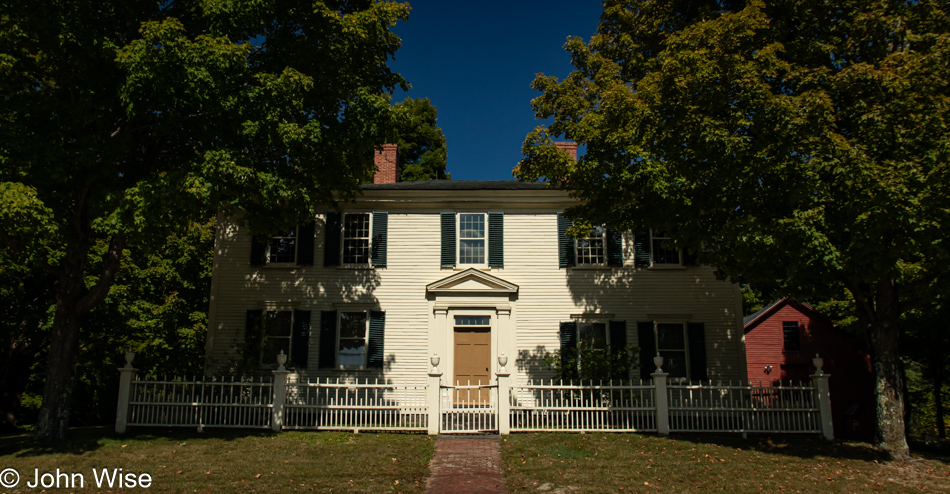
A president you’ve likely never heard of, Franklin Pierce, the 14th president of the United States, lived on this homestead a long time ago.
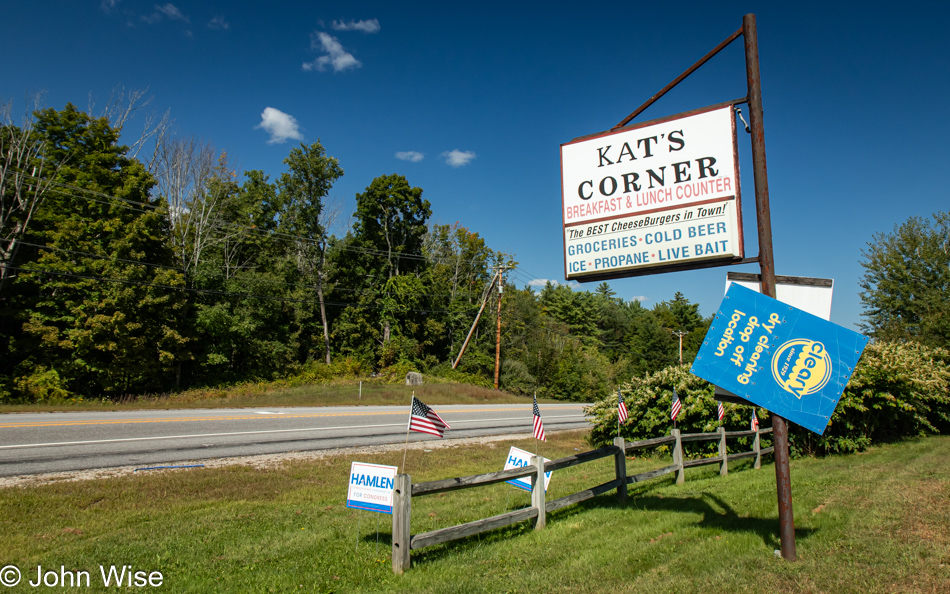
Stopped for lunch at Kat’s Corner, just down the road from the president’s place. Kat was still there, though it was well after 2:00 when the kitchen usually closes, but she was gracious enough to feed us. We opted for the ‘Strami Burgers, ‘ which seemed unique to the area, and while she got to cooking, we could chat with her from the countertop where we were sitting. Kat is ready to retire; she’s battle-scarred from doing business in a place with too many customers demanding the kind of privilege that’s created war stories and has damaged her experience of owning this place. It’s a tragedy that after the corner shop and cafe finally change hands, as it’s already been sold, she leaves this business she’s loved for so long with memories tainted by hostility. Lunch was great, truly homemade fare for those who appreciate the love people bring to their business.
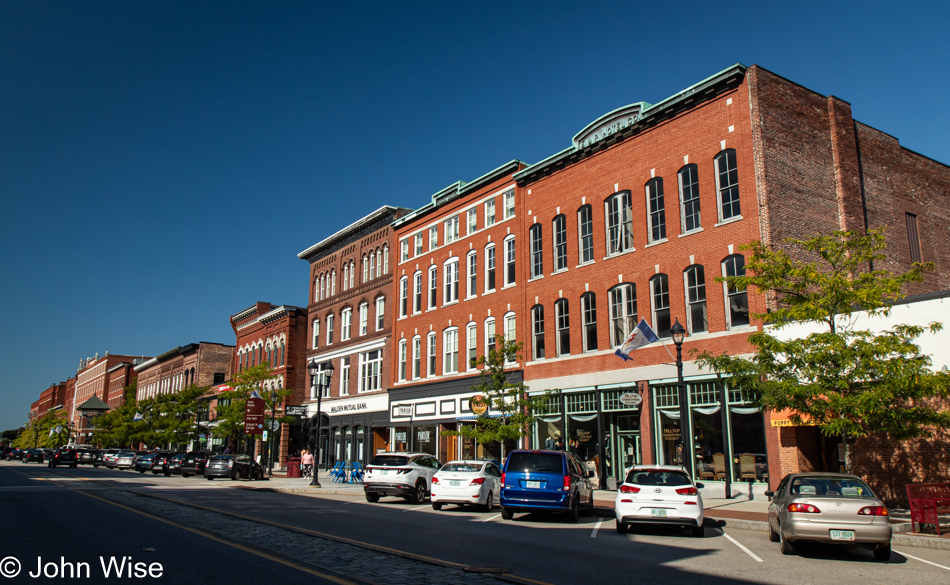
Concord, New Hampshire, is a wonderfully vibrant-looking place that appears to have saved its small main street businesses. Now, if only they could take a page from Portland, Oregon, and learn something about civility. I don’t mean to imply that Portland doesn’t have its problems, some of them huge, but it is a friendly city; maybe that’s why it’s so scuffed, and this place looks like Singapore, where you are going to jail for spitting out a piece of gum.
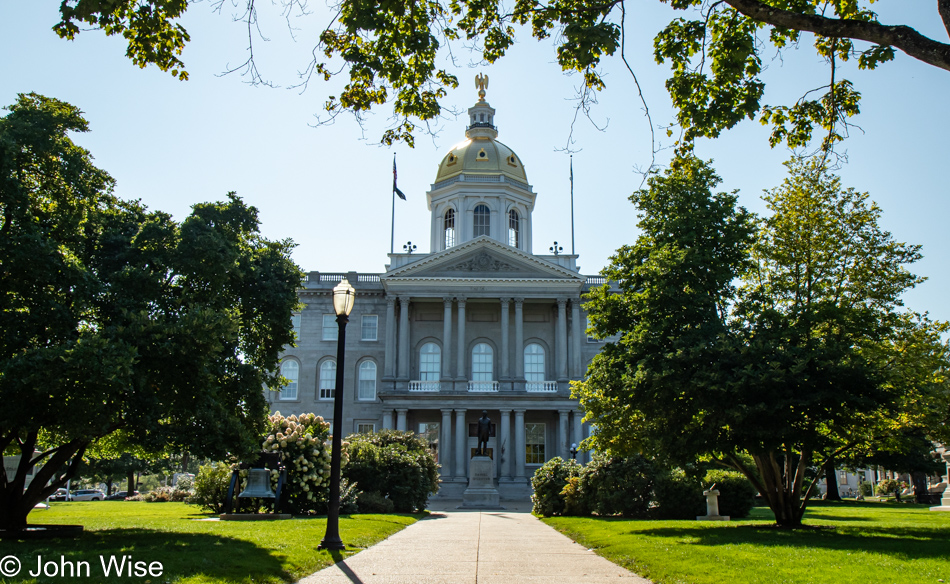
This is the New Hampshire State House; some would call it their State Capitol Building, but that would be wrong here. Try it, and you’ll soon find yourself behind the glare of wicked stares and a proper brow lashing.
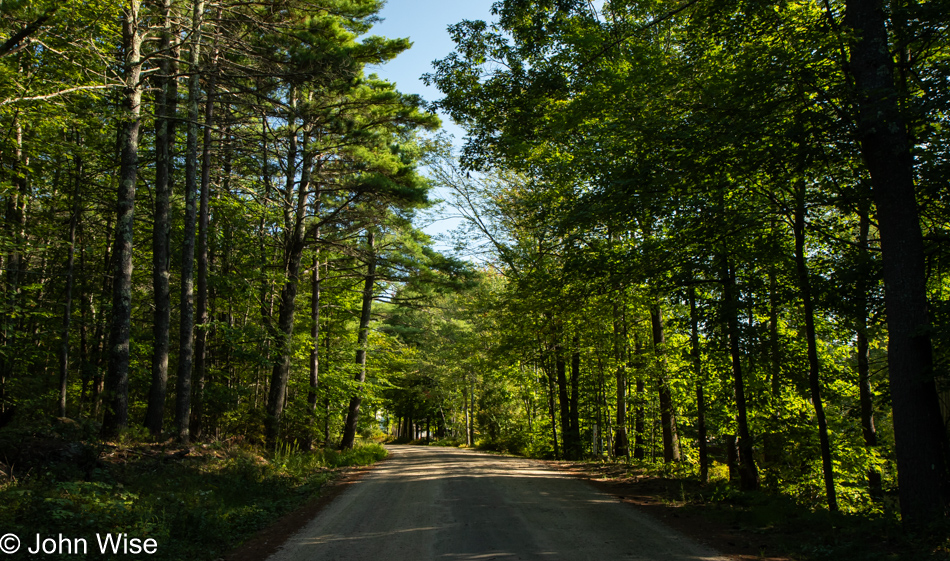
At least there are dirt roads where we could find a modicum of tranquility away from the angry, aggressive drivers and busybodies.
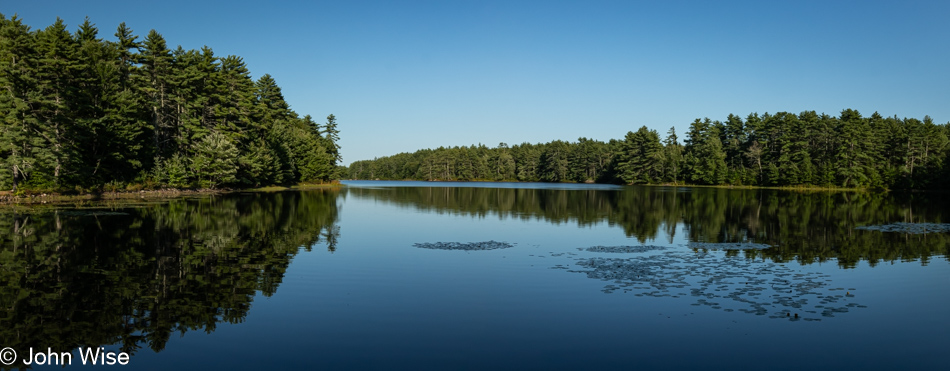
Our roadside stop was at the Rochester Reservoir, which had plenty of do-not-trespass signs, but do they really mean no photographers, or does the warning apply to would-be picnickers and the homeless who might want to bathe in these waters?
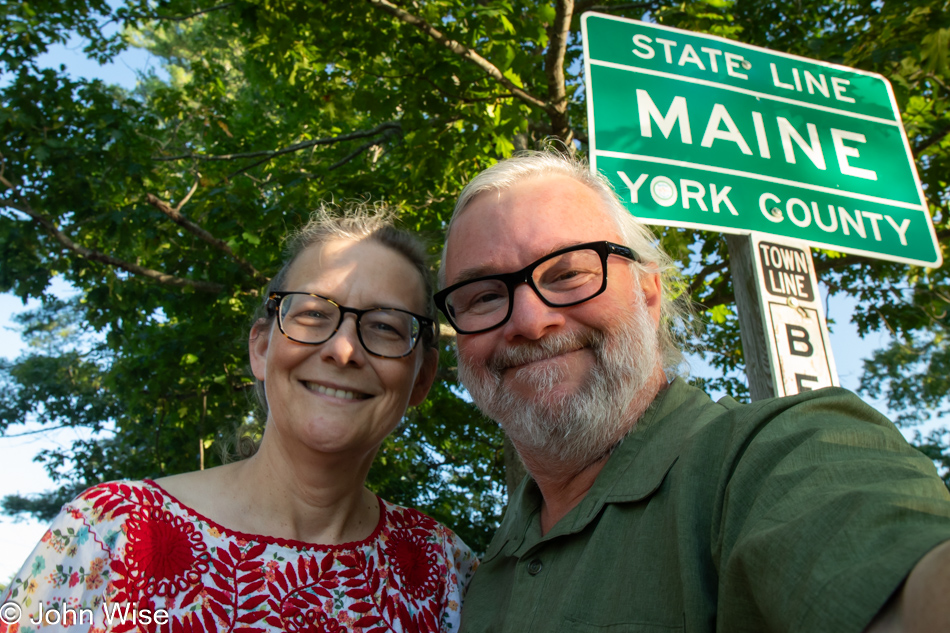
We’ve reached Maine but still have a good bit of driving before reaching our destination. This is our third visit to this state.
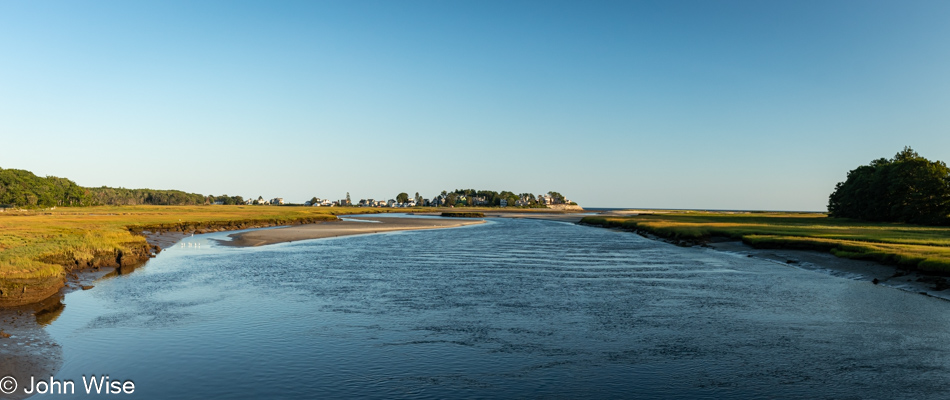
We’ve reached the wealthy enclave of Kennebunk, which is not where we are staying. We are up the street in Kennebunkport, though that is also where the Bush family, as in the two presidents, have their retreat at Walker Point. Speaking of the Bushs, we were pulling into town and stopped at a light when a couple of women started waving to some cars, as in three identical black SUVs driven by what were obviously Secret Service agents; their passengers could have only been former President George W. Bush and his wife Laura, as nobody else in Kennebunkport this evening could possibly also be deserving of a Secret Service escort.
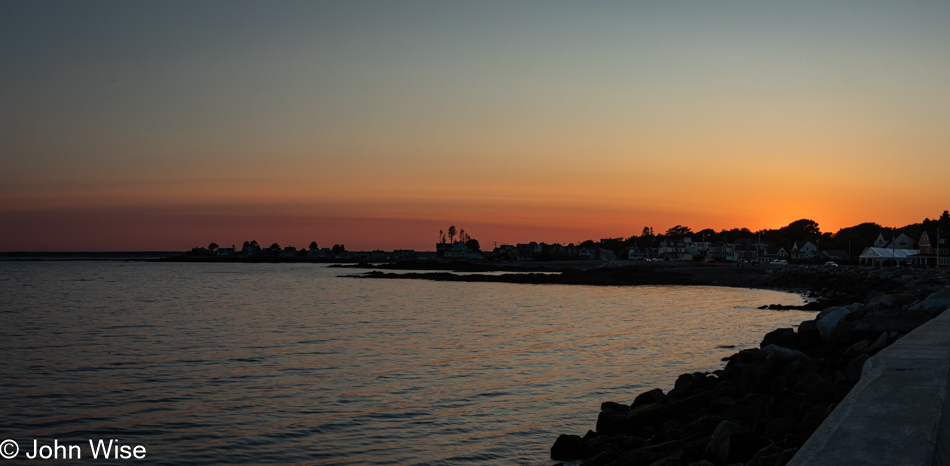
It costs $25 to park at the beach. It’s a day pass, but what if you only stop for a few minutes to grab a few photos? You’d better hope that the car that scans license plates to ensure enforcement doesn’t roll by yours while you dart out to the seashore. The week pass is $103. Guess who won’t be visiting any beaches in Kennebunkport during their stay?